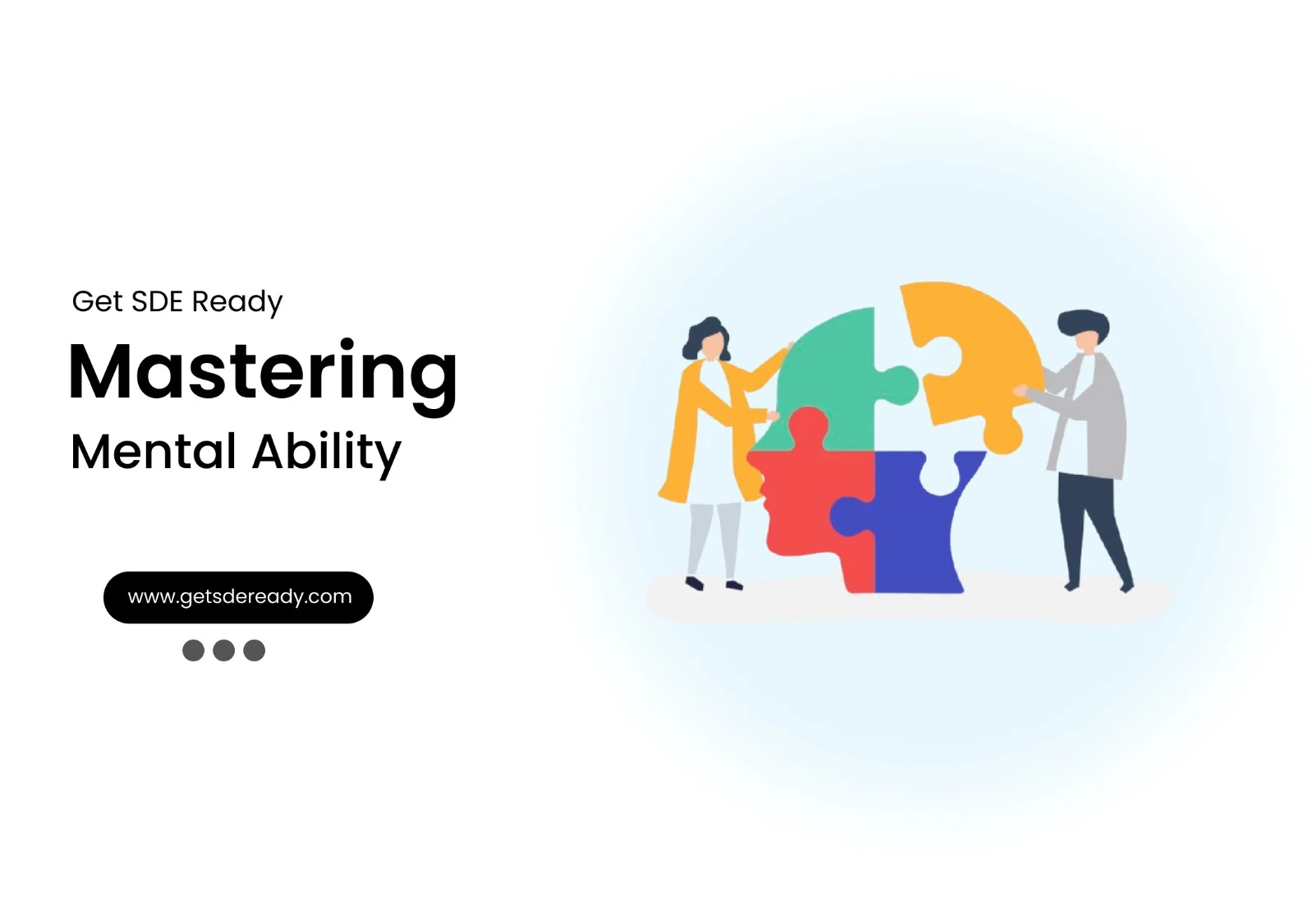Data Structures and Algorithms
- Introduction to Data Structures and Algorithms
- Time and Space Complexity Analysis
- Big-O, Big-Theta, and Big-Omega Notations
- Recursion and Backtracking
- Divide and Conquer Algorithm
- Dynamic Programming: Memoization vs. Tabulation
- Greedy Algorithms and Their Use Cases
- Understanding Arrays: Types and Operations
- Linear Search vs. Binary Search
- Sorting Algorithms: Bubble, Insertion, Selection, and Merge Sort
- QuickSort: Explanation and Implementation
- Heap Sort and Its Applications
- Counting Sort, Radix Sort, and Bucket Sort
- Hashing Techniques: Hash Tables and Collisions
- Open Addressing vs. Separate Chaining in Hashing
- DSA Questions for Beginners
- Advanced DSA Questions for Competitive Programming
- Top 10 DSA Questions to Crack Your Next Coding Test
- Top 50 DSA Questions Every Programmer Should Practice
- Top Atlassian DSA Interview Questions
- Top Amazon DSA Interview Questions
- Top Microsoft DSA Interview Questions
- Top Meta (Facebook) DSA Interview Questions
- Netflix DSA Interview Questions and Preparation Guide
- Top 20 DSA Interview Questions You Need to Know
- Top Uber DSA Interview Questions and Solutions
- Google DSA Interview Questions and How to Prepare
- Airbnb DSA Interview Questions and How to Solve Them
- Mobile App DSA Interview Questions and Solutions
DSA Interview Questions
- DSA Questions for Beginners
- Advanced DSA Questions for Competitive Programming
- Top 10 DSA Questions to Crack Your Next Coding Test
- Top 50 DSA Questions Every Programmer Should Practice
- Top Atlassian DSA Interview Questions
- Top Amazon DSA Interview Questions
- Top Microsoft DSA Interview Questions
- Top Meta (Facebook) DSA Interview Questions
- Netflix DSA Interview Questions and Preparation Guide
- Top 20 DSA Interview Questions You Need to Know
- Top Uber DSA Interview Questions and Solutions
- Google DSA Interview Questions and How to Prepare
- Airbnb DSA Interview Questions and How to Solve Them
- Mobile App DSA Interview Questions and Solutions
Data Structures and Algorithms
- Introduction to Data Structures and Algorithms
- Time and Space Complexity Analysis
- Big-O, Big-Theta, and Big-Omega Notations
- Recursion and Backtracking
- Divide and Conquer Algorithm
- Dynamic Programming: Memoization vs. Tabulation
- Greedy Algorithms and Their Use Cases
- Understanding Arrays: Types and Operations
- Linear Search vs. Binary Search
- Sorting Algorithms: Bubble, Insertion, Selection, and Merge Sort
- QuickSort: Explanation and Implementation
- Heap Sort and Its Applications
- Counting Sort, Radix Sort, and Bucket Sort
- Hashing Techniques: Hash Tables and Collisions
- Open Addressing vs. Separate Chaining in Hashing
- DSA Questions for Beginners
- Advanced DSA Questions for Competitive Programming
- Top 10 DSA Questions to Crack Your Next Coding Test
- Top 50 DSA Questions Every Programmer Should Practice
- Top Atlassian DSA Interview Questions
- Top Amazon DSA Interview Questions
- Top Microsoft DSA Interview Questions
- Top Meta (Facebook) DSA Interview Questions
- Netflix DSA Interview Questions and Preparation Guide
- Top 20 DSA Interview Questions You Need to Know
- Top Uber DSA Interview Questions and Solutions
- Google DSA Interview Questions and How to Prepare
- Airbnb DSA Interview Questions and How to Solve Them
- Mobile App DSA Interview Questions and Solutions
DSA Interview Questions
- DSA Questions for Beginners
- Advanced DSA Questions for Competitive Programming
- Top 10 DSA Questions to Crack Your Next Coding Test
- Top 50 DSA Questions Every Programmer Should Practice
- Top Atlassian DSA Interview Questions
- Top Amazon DSA Interview Questions
- Top Microsoft DSA Interview Questions
- Top Meta (Facebook) DSA Interview Questions
- Netflix DSA Interview Questions and Preparation Guide
- Top 20 DSA Interview Questions You Need to Know
- Top Uber DSA Interview Questions and Solutions
- Google DSA Interview Questions and How to Prepare
- Airbnb DSA Interview Questions and How to Solve Them
- Mobile App DSA Interview Questions and Solutions
How to Build a Strong Developer Portfolio in 2025
In the fast-paced world of technology, a strong developer portfolio can set you apart from the competition. As we move into 2025, showcasing your skills, projects, and unique story is essential for landing your dream tech job or attracting clients as a freelancer. A well-crafted portfolio demonstrates your technical expertise, problem-solving abilities, and adaptability to emerging trends. Below, we outline the key steps to create a standout portfolio that aligns with the latest industry demands.
Ready to elevate your career? Sign up for our free courses and stay updated on the latest portfolio-building strategies. Sign up here.
Understanding the Importance of a Developer Portfolio
A developer portfolio is more than a collection of projects—it’s a professional showcase of your skills, creativity, and growth. In 2025, with the tech industry evolving rapidly, a portfolio is your chance to prove you can deliver real-world solutions. It’s particularly crucial in a competitive job market where recruiters spend an average of 8 seconds scanning a portfolio. A strong portfolio can differentiate you from other candidates by highlighting your ability to adapt to trends like AI, cloud computing, and emerging technologies.
Key Components of a Strong Developer Portfolio
To create a portfolio that resonates with recruiters and clients, focus on these essential components:
Showcasing Your Projects
Your projects are the core of your portfolio. They should demonstrate a range of skills and technologies relevant to your target role. Consider including:
- A responsive web application built with modern frameworks like React or Next.js.
- A machine learning model, such as an image classification system using TensorFlow.
- A cloud-based solution deployed on AWS, Azure, or Google Cloud.
For each project, provide:
- A clear description of the project’s purpose.
- The technologies and tools used.
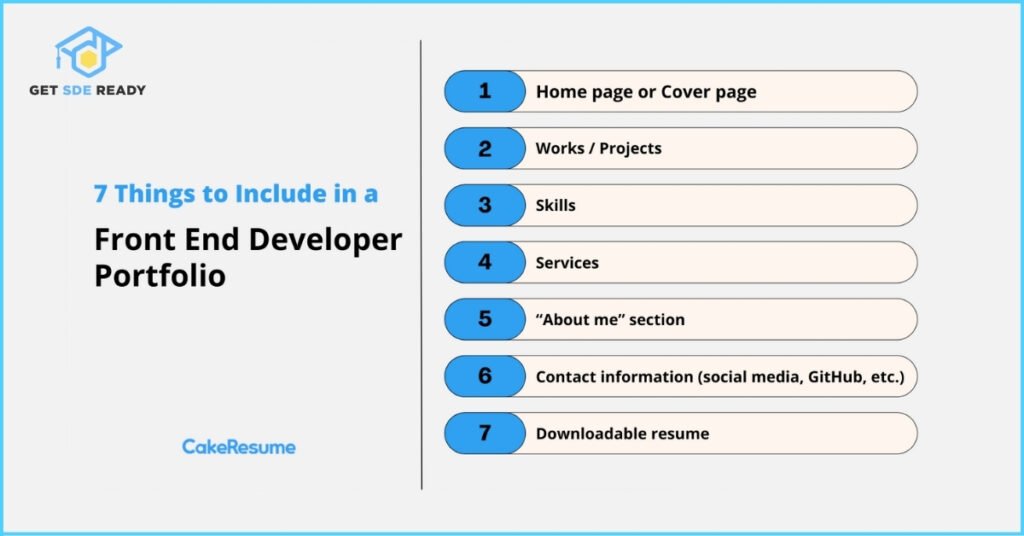
- Challenges faced and how you overcame them.
- Measurable results, such as “Reduced API response time by 30%.”
If you’re looking to strengthen your foundational skills, our DSA course can help you master data structures and algorithms, which are critical for many developer roles.
Highlighting Your Skills
Clearly list your technical and soft skills. In 2025, in-demand technical skills include:
- Web Development: Proficiency in JavaScript, React, or Next.js.
- AI and Machine Learning: Knowledge of Python, TensorFlow, or PyTorch.
- Cloud Computing: Experience with AWS, Azure, or Google Cloud.
Soft skills like communication and teamwork should be tied to specific projects. For example, mention how you collaborated with a team to deliver a project under tight deadlines. To deepen your expertise, our Web Development course covers the latest tools and frameworks to enhance your portfolio.
Personal Branding
Your portfolio should tell your unique story. Share your development philosophy, such as a commitment to clean code or user-centric design, and outline your career goals. For example, you might write, “I focus on building scalable, user-friendly applications that solve real-world problems.” Include your learning approach, such as diving into documentation or building toy projects to master new technologies. Contributions to open-source projects or coding challenges (e.g., LeetCode) can further showcase your passion.
Design and Usability
A visually appealing and user-friendly portfolio is critical. Ensure your portfolio is:
- Responsive: Works seamlessly on desktop, tablet, and mobile devices.
- Accessible: Follows WCAG guidelines for inclusivity.
- Unique: Avoid generic templates; create a design that reflects your personal brand.
Tools like Wrypa.com offer modern UI/UX templates to help you craft a professional portfolio with ease.
Trends and Technologies to Focus On in 2025
Staying ahead of industry trends is key to building a future-proof portfolio. Here are the top areas to focus on:
Artificial Intelligence and Machine Learning
AI and ML are driving innovation across industries. Including an AI/ML project, such as a chatbot or predictive model, can make your portfolio stand out. For example, you could build a sentiment analysis tool using Python and NLTK. If you’re new to this field, our Data Science course provides hands-on training to create portfolio-worthy AI projects.
Cloud Computing
Cloud skills are in high demand as companies increasingly rely on scalable infrastructure. Showcase projects that demonstrate your ability to deploy applications on platforms like AWS or Azure. For instance, a serverless web app using AWS Lambda can highlight your cloud expertise.
Emerging Technologies
Exploring emerging fields like blockchain or edge computing can set you apart. A simple blockchain-based voting system using Solidity or an edge computing prototype can demonstrate your forward-thinking approach. These projects show recruiters you’re prepared for the future of tech.
Technology | Example Project | Why It Matters |
AI/ML | Sentiment analysis tool | High demand in industries like finance and healthcare |
Cloud Computing | Serverless web app on AWS | Essential for scalable, modern applications |
Blockchain | Decentralized voting system | Emerging field with growing adoption |
Building and Hosting Your Portfolio
Creating and hosting your portfolio requires careful consideration of platforms and design tools.
Choosing a Platform
Select a hosting platform that suits your needs:
- GitHub Pages: Free, easy to set up, and ideal for showcasing code repositories.
- Netlify: Offers continuous deployment and is great for static sites.
- Vercel: Perfect for React and Next.js projects with serverless capabilities.
Each platform has unique benefits, so choose based on your technical expertise and project requirements.
Designing Your Portfolio
When designing your portfolio:
- Use frameworks like React or Next.js for dynamic, interactive experiences.
- Choose a cohesive color scheme and typography that reflect your brand.
- Include high-quality screenshots or videos of your projects.
- Ensure intuitive navigation for a seamless user experience.
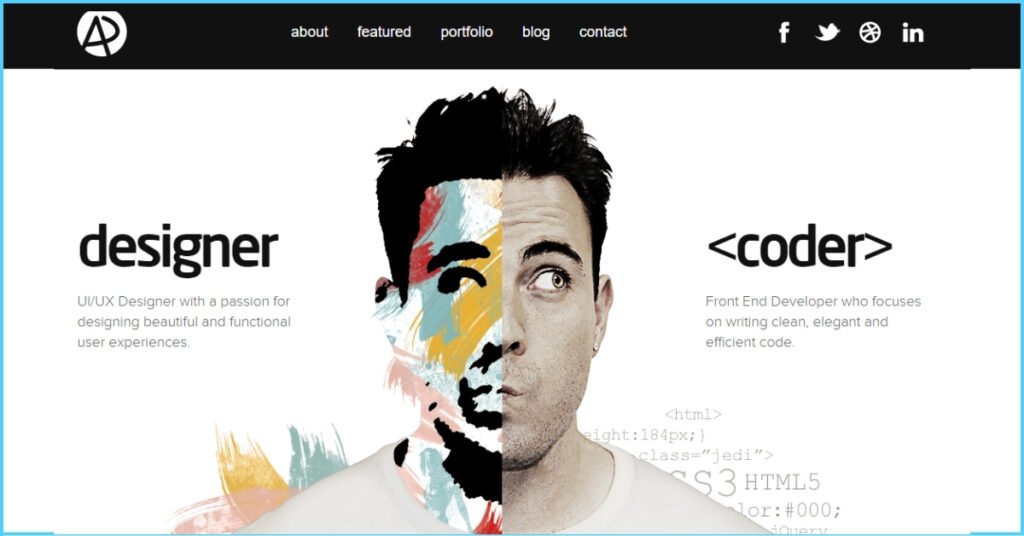
Our Web Development course can guide you through building a professional portfolio site using modern frameworks.
Writing Content
For each project, write concise, engaging descriptions that include:
- The problem you solved.
- Technologies and tools used.
- Key features and functionalities.
- Results or lessons learned.
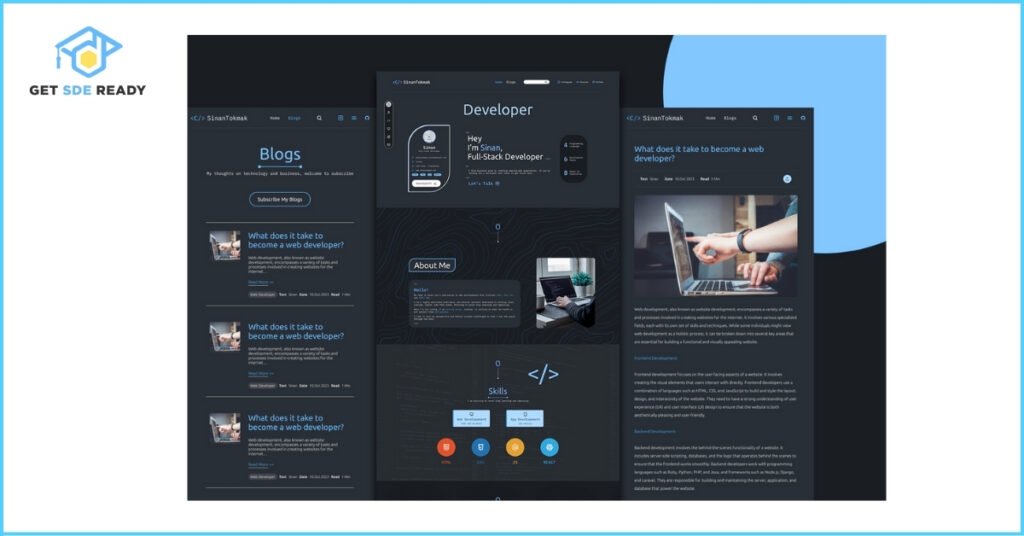
Avoid technical jargon to ensure accessibility for non-technical recruiters. For example, instead of “Implemented a RESTful API,” say, “Built a system for seamless data interaction.”
Keeping Your Portfolio Updated
A portfolio is a living document that should evolve with your career. Review and update it every few months to include:
- New projects that reflect your latest skills.
- Updated skills or certifications.
- Refreshed design to align with current trends.
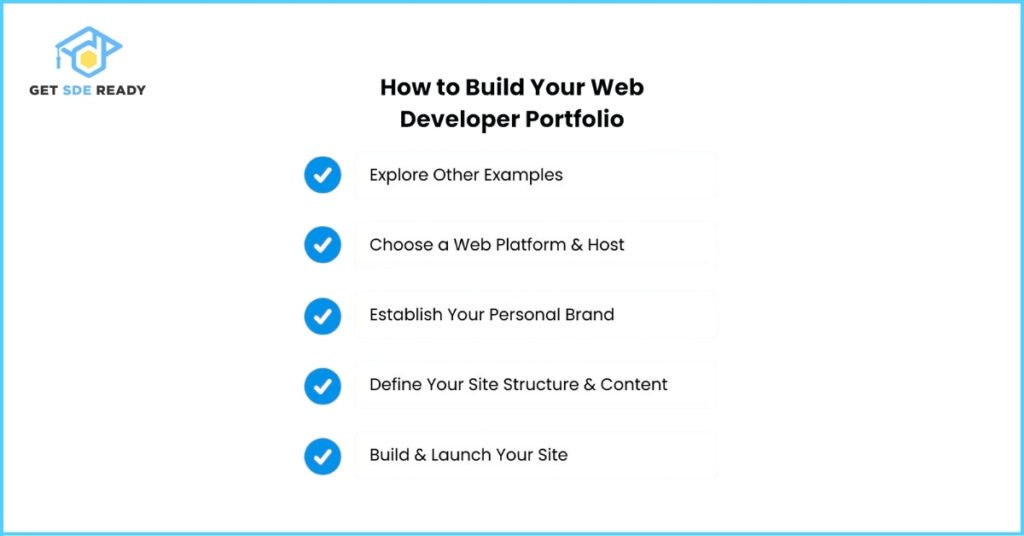
Regular updates demonstrate your commitment to growth and keep your portfolio relevant.
Leveraging Your Portfolio in Interviews
A strong portfolio can also prepare you for technical interviews. Recruiters often ask questions based on your projects, such as:
- Can you walk me through this project? Explain the problem, technologies, and decisions made.
- What challenges did you face? Discuss obstacles and your solutions.
- How did you ensure code quality? Highlight testing or best practices.
- Would you do anything differently? Show your ability to learn and improve.
- How does this project relate to the role? Connect your work to the job’s requirements.
For a comprehensive approach to mastering technical interviews and portfolio-building, our Master DSA, Web Dev, System Design course covers all the essentials.
Conclusion
Building a strong developer portfolio in 2025 is about showcasing your best work, highlighting in-demand skills, and telling a compelling story. By focusing on relevant projects, staying current with trends like AI and cloud computing, and maintaining a user-friendly design, you can create a portfolio that attracts recruiters and clients alike. Start today and take the first step toward a successful tech career!
For a quick start, explore our Crash Course to kickstart your portfolio-building journey.
FAQs
What are the essential components of a developer portfolio in 2025?
Projects showcasing your skills, a list of technical and soft skills, personal branding elements, and a responsive, accessible design.
How can I make my portfolio stand out in 2025?
Include projects with trending technologies like AI and cloud computing, and create a unique, interactive design that reflects your personal brand.
Is it necessary to include only professional projects in my portfolio?
No, personal projects, hackathon entries, or open-source contributions are valuable, especially for beginners.
How often should I update my portfolio?
Every few months to reflect new skills, projects, or career goals.
What tools can I use to build my portfolio?
Frameworks like React or Next.js, and hosting platforms like GitHub Pages, Netlify, or Vercel.
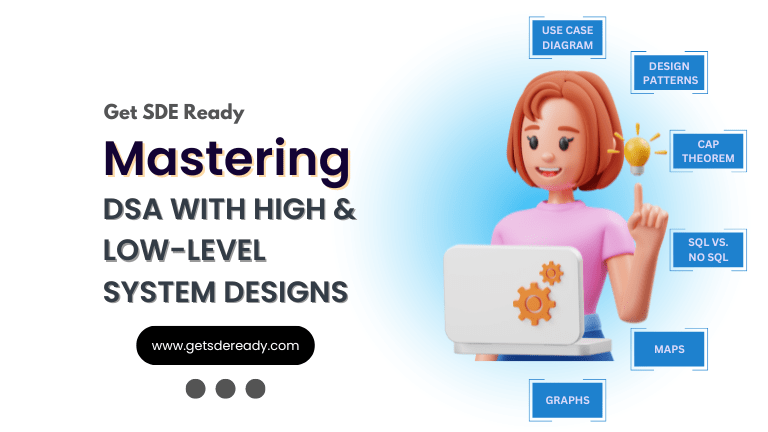
DSA, High & Low Level System Designs
- 85+ Live Classes & Recordings
- 24*7 Live Doubt Support
- 400+ DSA Practice Questions
- Comprehensive Notes
- HackerRank Tests & Quizzes
- Topic-wise Quizzes
- Case Studies
- Access to Global Peer Community
Buy for 52% OFF
₹25,000.00 ₹11,999.00
Accelerate your Path to a Product based Career
Boost your career or get hired at top product-based companies by joining our expertly crafted courses. Gain practical skills and real-world knowledge to help you succeed.
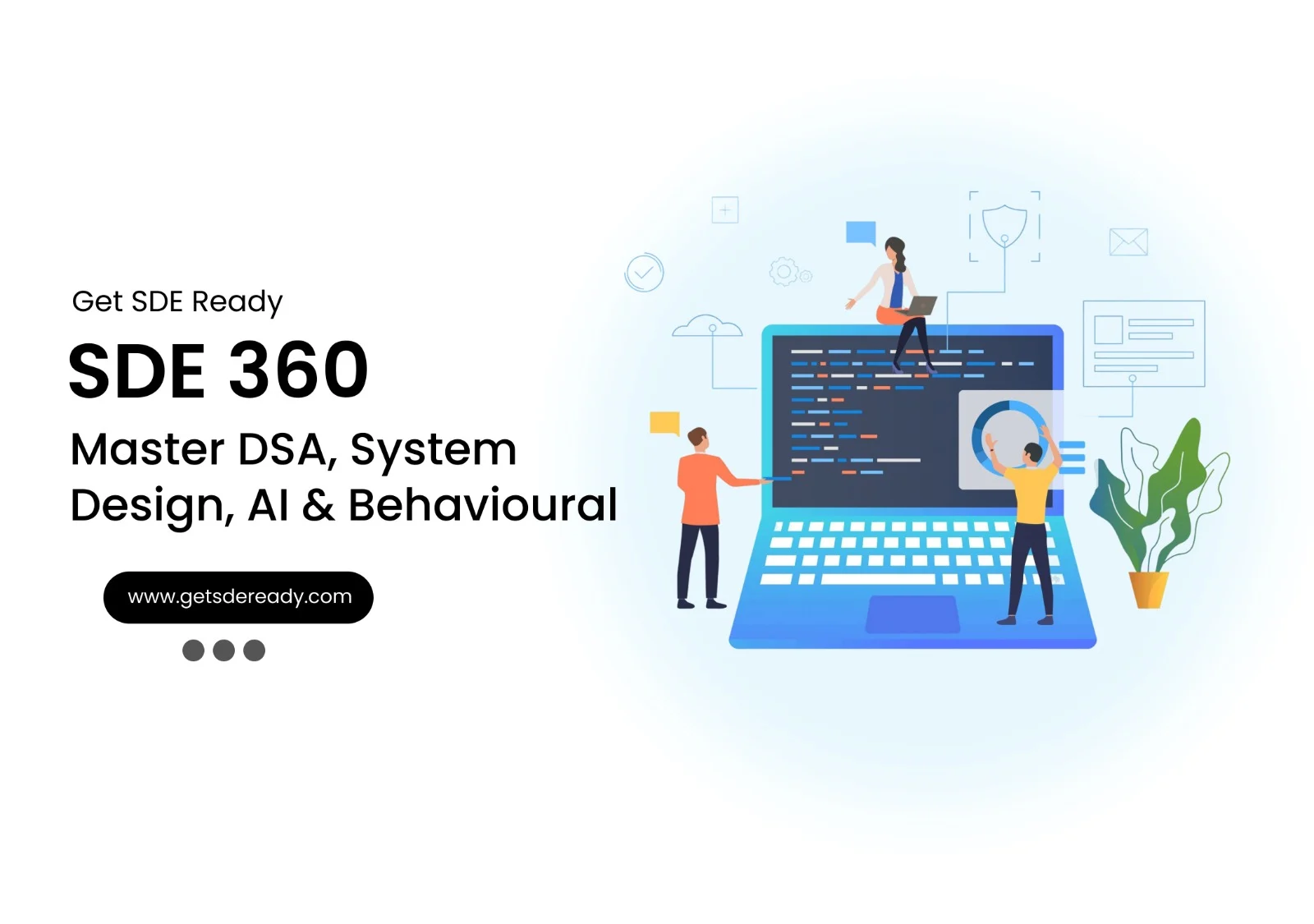
SDE 360: Master DSA, System Design, AI & Behavioural
- 100+ Live Classes & Recordings
- 24*7 Live Doubt Support
- 400+ DSA Practice Questions
- Comprehensive Notes
- HackerRank Tests & Quizzes
- Topic-wise Quizzes
- Case Studies
- Access to Global Peer Community
Buy for 50% OFF
₹39,999.00 ₹19,999.00

DSA, High & Low Level System Designs
- 85+ Live Classes & Recordings
- 24*7 Live Doubt Support
- 400+ DSA Practice Questions
- Comprehensive Notes
- HackerRank Tests & Quizzes
- Topic-wise Quizzes
- Case Studies
- Access to Global Peer Community
Buy for 52% OFF
₹25,000.00 ₹11,999.00
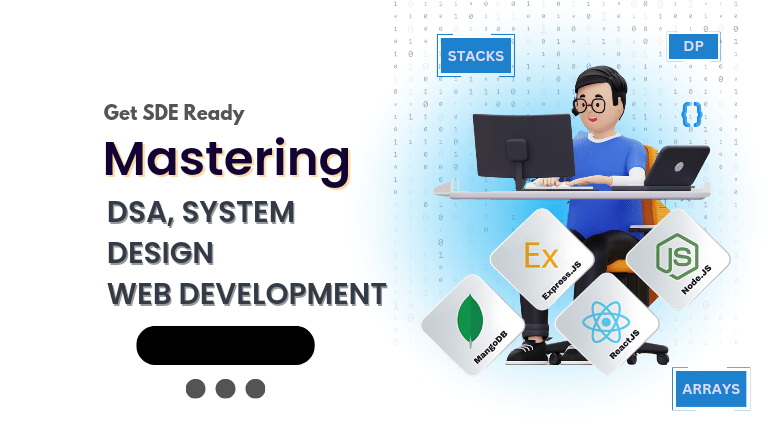
Fast-Track to Full Spectrum Software Engineering
- 120+ Live Classes & Recordings
- 24*7 Live Doubt Support
- 400+ DSA Practice Questions
- Comprehensive Notes
- HackerRank Tests & Quizzes
- 12+ live Projects & Deployments
- Case Studies
- Access to Global Peer Community
Buy for 51% OFF
₹35,000.00 ₹16,999.00
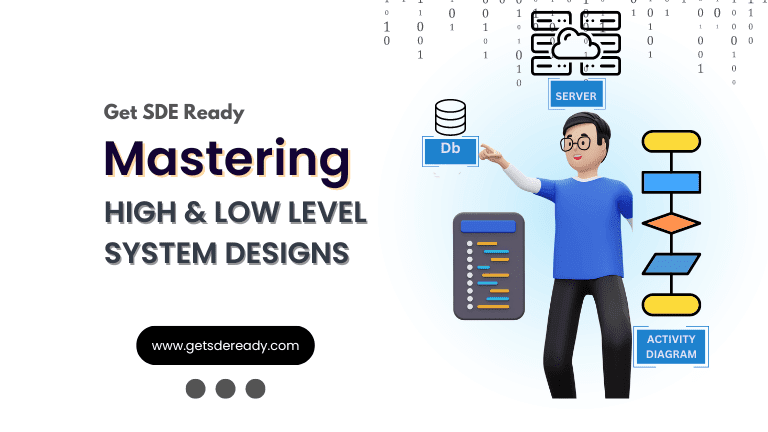
Low & High Level System Design
- 20+ Live Classes & Recordings
- 24*7 Live Doubt Support
- Case Studies
- Comprehensive Notes
- HackerRank Tests
- Topic-wise Quizzes
- Access to Global Peer Community
- Interview Prep Material
Buy for 60% OFF
₹20,000.00 ₹7,999.00
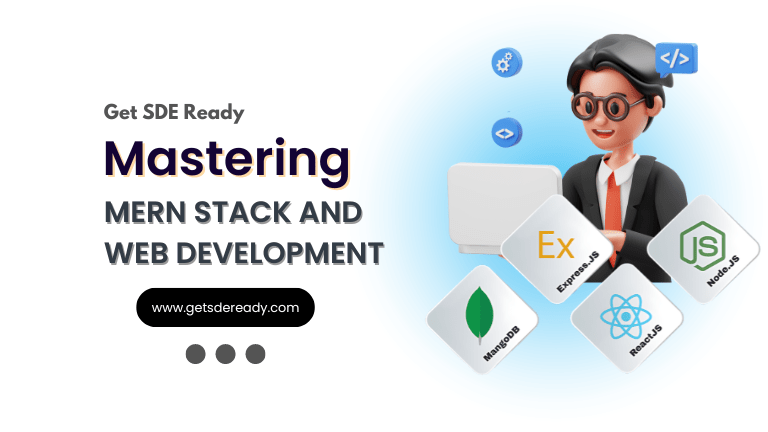
Mastering Mern Stack (WEB DEVELOPMENT)
- 65+ Live Classes & Recordings
- 24*7 Live Doubt Support
- 12+ Hands-on Live Projects & Deployments
- Comprehensive Notes & Quizzes
- Real-world Tools & Technologies
- Access to Global Peer Community
- Interview Prep Material
- Placement Assistance
Buy for 53% OFF
₹15,000.00 ₹6,999.00
Reach Out Now
If you have any queries, please fill out this form. We will surely reach out to you.
Contact Email
Reach us at the following email address.
arun@getsdeready.com
Phone Number
You can reach us by phone as well.
+91-97737 28034
Our Location
Rohini, Sector-3, Delhi-110085
